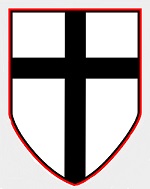Hobby Master HA0133 German Junkers Ju-87D-3 Stuka Dive-Bomber - T6+EK, Friedrich Reissner, II./Sturzkampfgeschwader 2 "Immelmann", Eastern Front (1:72 Scale)
"Guns before butter. Guns will make us powerful; butter will only make us fat."
- Reichsmarschall Hermann Goering, Head of the German Luftwaffe
 During the early to mid-stages of the Second World War, the Stuka (short for "sturzkampfflugzeug" or dive-bomber) struck terror in the hearts and minds of soldiers and civilians alike. The Stuka was a rugged machine, designed to swoop down and destroy its target using 500-lb bombs or tear into them using 37mm flak guns mounted underneath the wings.
During the early to mid-stages of the Second World War, the Stuka (short for "sturzkampfflugzeug" or dive-bomber) struck terror in the hearts and minds of soldiers and civilians alike. The Stuka was a rugged machine, designed to swoop down and destroy its target using 500-lb bombs or tear into them using 37mm flak guns mounted underneath the wings.
Flying at 4,600 meters (15,000 ft), the pilot of a Stuka located his target through a bombsight window in the cockpit floor. After opening the dive brakes and slowing his throttle, he then rolled the aircraft 180 degrees, automatically nosing the aircraft into a dive. Red tabs protruded from the upper surfaces of the wing as a visual indicator to the pilot that in case of a g induced black-out, the automatic dive recovery system would be activated.
The Stuka dived at a 60 - 90 degree angle, accelerating to 600 km/h (350 mph). When the aircraft was reasonably close to the target, a light on the contact altimeter came on to indicate the bomb-release point, usually at a minimum height of 450 m (1,500 ft). The pilot released the bomb by depressing a knob on the control column to release weapons and to initiate the automatic pull-out mechanism. A clutch located under the fuselage would swing the bomb out of the way of the propeller, and the aircraft would automatically begin a 6g pullout.
Once the nose was above the horizon, dive brakes were retracted, the throttle was opened, and the propeller was set to climb. The pilot regained control and resumed normal flight. The remaining bombs under the wings were used for other targets.
Pictured here is a 1:72 scale replica of a Junkers Ju 87D-3 Stuka dive-bomber that was piloted by Friedrich Reissner, who was attached to II./Sturzkampfgeschwader 2 "Immelmann", then deployed to the Eastern Front.
Now in stock!
Dimensions:
Length: 7-inches
Wingspan: 7-1/2-inches
Release Date: May 2022
 Historical Account: "Age Before Beauty" - Despite the Stuka's vulnerability to enemy fighters having been exposed during the Battle of Britain, the Luftwaffe had no choice but to continue its development, as there was no replacement aircraft in sight. The result was the D-series. In June 1941, the RLM ordered five prototypes, the Ju 87 V21-25. A Daimler-Benz DB 603 powerplant was to be installed in the Ju 87 D-1, but it did not have the power of the Jumo 211 and performed "poorly" during tests and was dropped. The Ju 87 D-series featured two coolant radiators underneath the inboard sections of the wings, while the oil cooler was relocated to the position formerly occupied by the single, undernose "chin" coolant radiator. The D-series also introduced an aerodynamically refined cockpit with better visibility and space. Armor protection was increased and a new dual-barrel 7.92 mm (.312 in) MG 81Z machine gun with an extremely high rate of fire was installed in the rear defensive position. Engine power was increased again, the Jumo 211J now delivering 1,420 PS (1,044 kW or 1,400 hp). Bomb carrying ability was nearly quadrupled from 500 kg (1,100 lb) in the B-version to 1,800 kg (4,000 lb) in the D-version (max. load for short ranges, overload condition), a typical bomb load ranged from 500-1,200 kg (1,100-2,600 lb).
Historical Account: "Age Before Beauty" - Despite the Stuka's vulnerability to enemy fighters having been exposed during the Battle of Britain, the Luftwaffe had no choice but to continue its development, as there was no replacement aircraft in sight. The result was the D-series. In June 1941, the RLM ordered five prototypes, the Ju 87 V21-25. A Daimler-Benz DB 603 powerplant was to be installed in the Ju 87 D-1, but it did not have the power of the Jumo 211 and performed "poorly" during tests and was dropped. The Ju 87 D-series featured two coolant radiators underneath the inboard sections of the wings, while the oil cooler was relocated to the position formerly occupied by the single, undernose "chin" coolant radiator. The D-series also introduced an aerodynamically refined cockpit with better visibility and space. Armor protection was increased and a new dual-barrel 7.92 mm (.312 in) MG 81Z machine gun with an extremely high rate of fire was installed in the rear defensive position. Engine power was increased again, the Jumo 211J now delivering 1,420 PS (1,044 kW or 1,400 hp). Bomb carrying ability was nearly quadrupled from 500 kg (1,100 lb) in the B-version to 1,800 kg (4,000 lb) in the D-version (max. load for short ranges, overload condition), a typical bomb load ranged from 500-1,200 kg (1,100-2,600 lb).
The internal fuel capacity of the Ju 87D was raised to 800 L (of which 780 L were usable) by adding wing tanks while retaining the option to carry two 300 L drop tanks. Tests at Rechlin-Larz Airfield revealed it made possible a flight duration of 2 hours and 15 minutes. With an extra two 300 L (80 US gal) fuel tanks, it could achieve four hours flight time.
The D-2 was a variant used as a glider tug by converting older D-series air frames. It was intended as the tropical version of the D-1 and had heavier armor to protect the crew from ground fire. The armor reduced its performance and caused the Oberkommando der Luftwaffe to "place no particular value on the production of the D-2". The D-3 was an improved D-1 with more armor for its ground-attack role. Some Ju 87 D-3s were designated D-3N or D-3 trop and fitted with night or tropical equipment. The D-4 designation applied to a prototype torpedo-bomber version, which could carry a 750-905 kg (1,653-1,995 lb) aerial torpedo on a PVC 1006 B rack - this setup would have had the capacity to carry the Luftorpedo LT 850, the German version of the well-proven Japanese Type 91 aerial torpedo of 848 kg (1,870 lb). The D-4 was to be converted from D-3 air frames and, in place of the carrier-specific Ju 87C series designs, operated from the aircraft carrier Graf Zeppelin. Other modifications included a flame eliminator and, unlike earlier D variants, two 20 mm MG 151/20 cannon, while the radio operator/rear gunner's ammunition supply was increased by 1,000 to 2,000 rounds.


